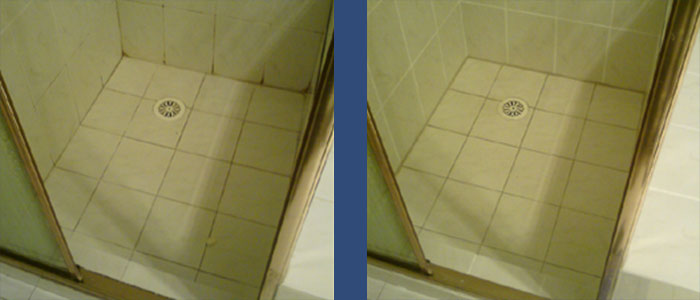Searching for Indications of Water Damage in the Bathroom
Searching for Indications of Water Damage in the Bathroom
Blog Article
The article listed below involving Looking for Signs of Water Damage in the Bathroom is rather motivating. You should look it over.

The washroom is exceptionally at risk for wet build-up as well as prospective water damage due to the frequent use of water in it. This article supplies straightforward examination strategies to assist discovering water damage risks.
The frequent use water in the washroom makes it very susceptible for moist accumulation and also possible water damage. By examining it regularly, you can lower water relevant damages.
The following set of examinations is simple to carry out and need to be done when in every three months in order to keep your washroom healthy and to prevent possible water damages brought on by the bath tub, the shower, pipe joints and plumbing, sinks, cupboards, and the commode
Do not overlook performing these assessments and be detailed while doing them. Keep in mind that these straightforward assessments can save you a great deal of money by providing very early indications for water damages
Sinks as well as Cabinets
Sinks and cupboards are exposed to dampness as well as moisture everyday and are commonly neglected. Check routinely under the sink and also on the counter top over it. Repair any kind of drip in the trap as it might suggest drainpipe problems. Check out the sink, slow draining pipelines might suggest a blocked drain. Change sink seals if they are broken or loosened.
Bathtub and also Shower
The shower and also tub call for special interest and maintenance. Examine the ceramic tiles and also replace if split. Make sure that there is no missing cement between the ceramic tiles. Inspect as well as change cracked caulking at joints where the wall surfaces fulfill the floor or the tub. Obstructed drains as well as pipelines problems will certainly prevent the tub from drying out and also may suggest significant problems underneath the bath tub. Consult with an expert quickly to prevent structural damages. Take notice of discolorations or soft areas around the tub wall surfaces as they may indicate an interior leakage.
Plumbing
Signs for water damages are hard to discover given that the majority of pipelines are installed inside the walls.
Pay special focus to floor covering and walls wetness as well as discolorations as they might indicate an unnoticeable plumbing problem. Inspect wetness degrees in adjacent areas as well.
The Toilet
The bathroom is a prone water joint. Examine the water lines and also search for leaks around the toilet seat, in the hose, and under the water tank. If you detect any signs of moisture on the floor around the commode, look for leakages in the toilet edge and also storage tank seals.
Know that hanging bathroom bowl deodorants raises the chances for clogs.
TIPS TO PREVENT WATER DAMAGE IN THE BATHROOM
The average household uses approximately 80-100 gallons of water per person per day. For a family of 4, that's almost 2,500 gallons of water a week! The largest portion of this consumption comes from bathroom use. Flushing the toilet uses the most water, followed by taking a shower or bath. With that much water running through the home, water damage in the bathroom is bound to happen. Knowing how to spot signs of a water leak is essential to preventing long-term damage. This guide provides you with tips to reduce the impact of water damage on your bathroom.
CAUSES OF BATHROOM WATER DAMAGE
Pipe breaks are the most common cause of water damage we see in our daily jobs. The age of a pipe plays a large role in a pipe break as well as corrosion. Over time, the metal begins to break down, allowing water to escape. Frozen pipe breaks are also a concern in the winter months. Toilet overflows caused by paper products or children flushing inappropriate items. Degraded caulking around the toilet or bathtub can allow water seepage, sometimes behind the fixture, into the subfloor or walls. Condensation forms when the water in a pipe is cooler than the air temperature. Beads of water form on the exterior of the pipes, sometimes so much so that the water begins to drip and pool below. Sink or shower backups created by poor drainage. HOW TO PREVENT WATER DAMAGE IN YOUR BATHROOM
Inspect your toilet supply line for worn or frayed hoses and replace them as needed. Winterize your plumbing to prevent a frozen pipe break. Use vent fans to prevent condensation that can lead to mold growth. Routinely check and replace degraded caulking around your toilet or bathtub. Increase the temperature in your toilet tank and insulate your pipes during the warm summer months to keep condensation from forming. Use child safety locks on the toilets. Flush only toilet paper. "Flushable" wet wipes are actually not good for your plumbing system. Additionally, feminine hygiene products should not be flushed. Prevent water from escaping the tub or shower. Make sure shower curtains are in good condition. Inspect shower doors and replace the seal strip if necessary. Wipe up any water that accumulates on the floor and use bath mats. Water left to sit can cause damage to the tiles and flooring. Refrain from using bath products containing heavy oils to avoid a clogged drain.

I am very eager about How to Prevent Bathroom Water Damage and I'm hoping you liked the entire entry. Appreciated our write-up? Please share it. Let someone else check it out. We truly appreciate reading our article about Looking for Signs of Water Damage in the Bathroom.
Schedule Services Report this page